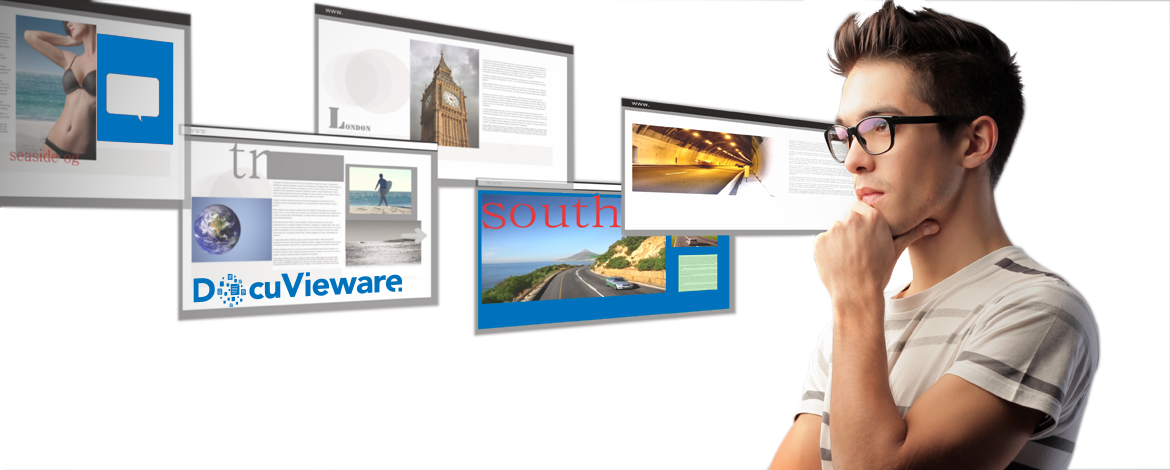Hi folks,
After the very short history of browsers we have presented you in the past 2 « episodes », today we are going to give you some light tech insights, as promised. Just so you can better understand why a plain modern browser is all you need to use DocuVieware-based web applications, at anytime, from anywhere.
But we need to tell you a word or two about browser plugins first.
When Netscape Navigator browser was first released, it allowed users to view only plain text, hyperlinks and images.
If another file format was to be encountered, the browser would download it and users would open it separately, with the appropriate application able to handle it.
Noticing this fact along with the intuition that the web might soon become universal, some visionaries at Adobe Systems including John Warnock (the CEO), contacted Netscape. They wanted to discuss the idea of a common approach to possibly make Netscape’s browser render Adobe’s document format (the PDF).
To illustrate the concept, 2 programmers at Adobe (Allan Padgett and Eswar Priyadarshan) had developed a proof-of-concept application which was presented in a live demo to the 2 CEOs: Jim Clark of Netscape and John Warnock of Adobe.
The demo was a big success: whenever the browser dealt with a link to a PDF file, it downloaded the PDF and automatically opened it inside its own window, amazingly handling both HTML and PDF formats.
The excited Jim Clark then asked who exactly from Netscape had helped with the browser-side coding.
The shocking answer was that… well… no one from Netscape was actually involved, it’s just Allan Padgett had made a bit of… uh… err…. well…, reverse-engineering on the browser.
But to a minimal extent only, so after the « no-offence-meant-none-taken » moments, both parties agreed that the concept should be properly implemented and released asap.
Apparently, Clark’s initial point of view was that Acrobat Reader’s entire code should be incorporated into Netscape Navigator’s code.
But merging 2 different applications into a single, monobloc application would have implied lots of subsequent issues and costs, for both sides.
So Allan Padgett insisted on his original approach of 2 different applications, each one developed and maintained by its owner, while a minimal common effort would focus just on the ‘contact points’ of the 2 apps.
Reason prevailed, his approach was adopted and this is how the browser-plugins era commenced.
Later on, Netscape provided APIs not only for Adobe’s PDF but for other file formats as well, while Adobe made plugins not just for Netscape Navigator but for all other important browsers that appeared afterwards.
